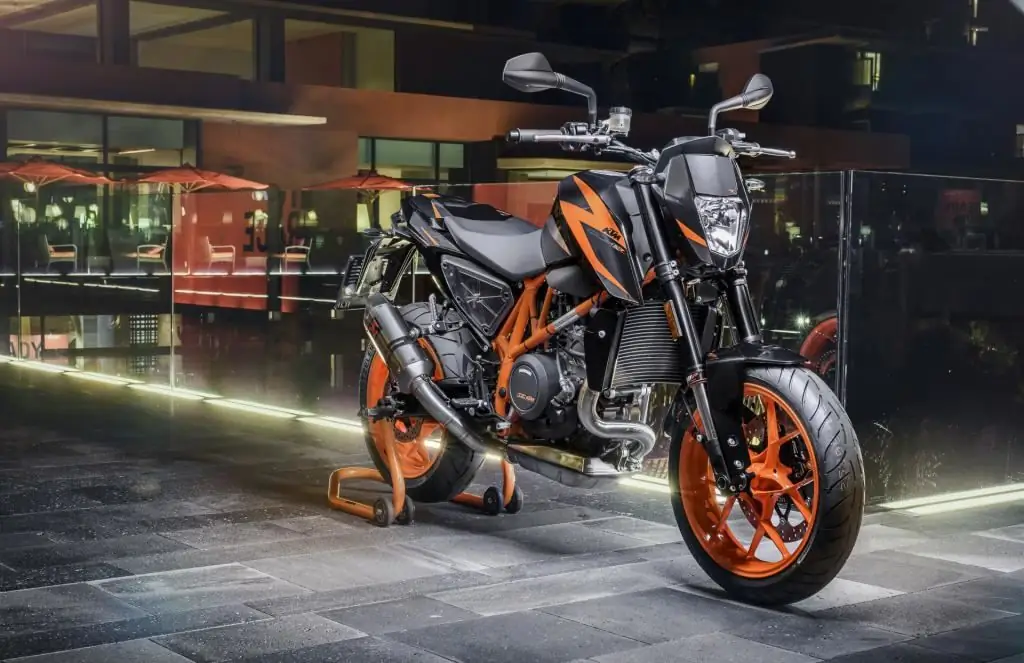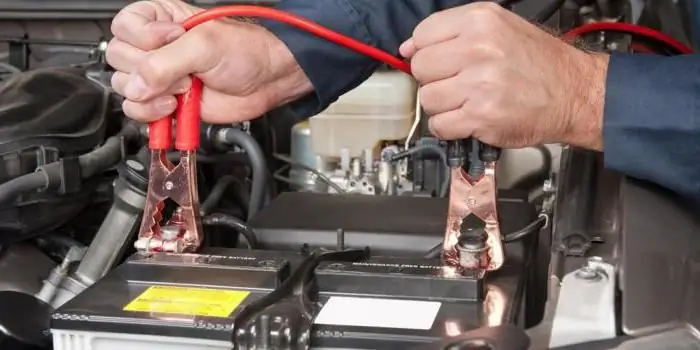2026 Author: Erin Ralphs | [email protected]. Last modified: 2025-06-01 05:35:55
Lviv Motor Plant, which produced the Verkhovyna moped, originally specialized in the manufacture of car trailers. The development and production of experimental small-capacity mokiks began in 1958. The first models in this direction were motorized bicycles. Then Verkhovyna 3 appeared, which played a significant role in the development of domestic motor vehicles of those times. The car was equipped with a two-stroke engine with a volume of 50 cubic centimeters. The engine power was two horsepower, and its acceleration dynamics made it possible to pick up speed of about 50 km / h. The filling of the unit was typical for its class, so the developers focused on the improved design of the equipment.

Features
A distinguishing feature of the Verkhovyna 3 moped from its predecessors is the wheels of a smaller diameter, as well as a welded tubular frame. Thanks to this design, it was possible to increase the power of the unit and reduce its weight to 51 kilograms. A modernized front fork appeared on the two-wheeled vehicle, and the landing improved. The rear fork was fixed to the frame with threaded bushings and bolts. This made it possible to reduce the degree of wear of the element atswing. Protective stops appeared on the brake pads with the possibility of changing or replenishing compensating washers, which extended the working life of the unit.
On the first versions, the fuel tank was fixed on the brackets, while on the Verkhovyna moped it was attached to the shoulder. This solution made it possible to avoid the appearance of cracks on the fasteners. Before being launched into the series, the mokik in question passed a series of tests, having overcome a total of more than five thousand kilometers. From 1972 to 1974, the 4th and 5th series of this technique were released. They differed in engine parameters and slight design alterations.
Sixth edition
Special attention in the line under consideration should be given to the Verkhovyna 6 moped. Here we can already talk about a radically different category. First, bicycle pedals were replaced with a kick starter. Secondly, the unit was equipped with a 2.2 horsepower two-stroke power unit, a two-speed gearbox with control on the left side of the steering wheel, and the exterior was slightly modified.

The high handlebar and oversized seat ensured a comfortable and soft landing. At the same time, wide tires and a soft updated suspension were responsible for the convenience of moving on difficult roads. The trunk remained in its place, withstood a load of 15 kg without problems.
The new mokik has become heavier by more than three kilograms, but this did not affect its maneuverability and speed parameters. In 1981, the seventh version appeared, equipped with a motor with a contactless ignition unit, a new carburetor and a powerful generator. Despite allinnovations, the speed of this unit was only 40 km / h. Of the changes, improved lights and the placement of control devices on the steering wheel can be noted.
Parameters
The following are the technical characteristics of the Verkhovyna moped of the sixth series:
- Type of power unit - gasoline carburetor two-stroke engine.
- Displacement - 49.8 cubic centimeters.
- Compression - 8.5.
- Stroke - 44 mm with a diameter of 38 mm.
- Food type - gasoline mixed with oil.
- Power Ratings - 2.2 HP force at 5200 rpm.
- The ignition of the Verkhovyna moped is a contact type, aggregating with an alternator.
- Transmission - manual two-range transmission with chain reduction.
- Length/width/height - 1, 77/0, 72/1, 2 m.
- Clearance - 10 cm.
- Brake system - drum type.
- Suspension - front - telescope, rear - pendulum block with springs.
- Weight - 53.5 kg.
- Fuel consumption per 100 km is about 2.2 liters.

Moped Karpaty
Verkhovyna received a worthy competitor in the spring of 1981. This season, one of the most significant models came out - Karpaty. The Mokik was equipped with a tubular frame, telescopic fork with spring damping, as well as a swingarm rear suspension and interchangeable wheels.
The new unit was equipped with a Sh-58 engine, with a volume of 50 cubic centimeters and a power equal to two horses, or an improved analogueSh-62 with non-contact ignition system. The speed limit of this technique was 45 km / h. "Karpaty" were very similar in terms of design to the Riga "Delta".

Comparative review
Among the main differences between "Verkhovyna" and "Karpaty" was the presence of a modified shape of the fuel tank, muffler and side covers in the last mokik. The designers increased the warranty period of mileage to 8 thousand kilometers, while for Verkhovyna it did not exceed 6 thousand. The working resource increased by 3 thousand kilometers before the first overhaul.
Despite the outdated Soviet technology, the equipment in question at that time was the flagship in its class and had decent characteristics. Another plus is that the repair of the Verkhovyna moped could be done by hand, without the use of special tools. Most often, the “engine” needed this, which the craftsmen sorted out, modernized and used again. Fortunately, there were no problems with spare parts.

Finally
Already in 1989, the number of produced small-capacity vehicles on two wheels from Lviv manufacturers amounted to almost 140 thousand units. This is taking into account the fact that in the 80s of the last century the plant reduced the production of these machines by almost half, due to a drop in demand. To attract buyers, new models began to be developed for lovers of fast driving (“Sport”) or motorcycle tourism (“Tourist” with a windshield). After the collapse of the Union, the plantThe production of light vehicles has practically ceased to exist.
Recommended:
"KTM 690 Duke": description with photo, technical specifications, engine power, maximum speed, features of operation, maintenance and repair

The first photos of the "KTM 690 Duke" discouraged experts and motorists: the new generation lost its signature faceted shapes and double optical lenses, turning into an almost identical clone of the 125th model. However, the company's press managers diligently assured that the motorcycle had gone through an almost complete update, so it can be considered a full-fledged fourth generation of the Duke model, which first appeared in 1994
"Land Rover Freelander 2" - 2.2 diesel engine: specifications, maintenance and repair

Mid-size crossover is the choice of a huge number of modern car owners. Increased ground clearance, four-wheel drive and high landing attract many people, although they rarely use this arsenal. In addition, in most cases, all this looks "menacing" only in words. In fact, the suspension moves are minimal, the all-wheel drive clutch overheats during active work, beautiful bumpers are scratched even on small slopes, and the risk of tearing something under the bottom in a rut is very high
GAZ-33104 "Valdai": specifications, maintenance and repair, reviews

Medium duty trucks are in high demand in Russia. If we talk about domestic cars, first of all, MAZ Zubrenok and KamAZ-4308 come to mind. Recently, the Next Lawn was added to this list. But for some reason, everyone forgot about Valdai. But at one time this car was quite popular. Why did this truck lose demand? Features of the GAZ-33104 Valdai car and reviews - later in our article
Automobile crane. Truck crane "Ivanovets". Specifications, repair, maintenance

The article is devoted to automobile cranes. The characteristics and modifications of the truck crane "Ivanovets", as well as the rules for maintenance, repair and transportation are considered
Diesel does not start well "cold": reasons. Maintenance and repair of diesel vehicles

Sooner or later, every car owner is faced with the problem of difficult engine start. And this happens both on gasoline and diesel engines. The latter especially often refuse to start in winter. And all because of the properties of diesel fuel. After all, unlike gasoline, there are no spark plugs that would set fire to the mixture. The fuel is ignited by compression force. Plus, diesel thickens at low temperatures

